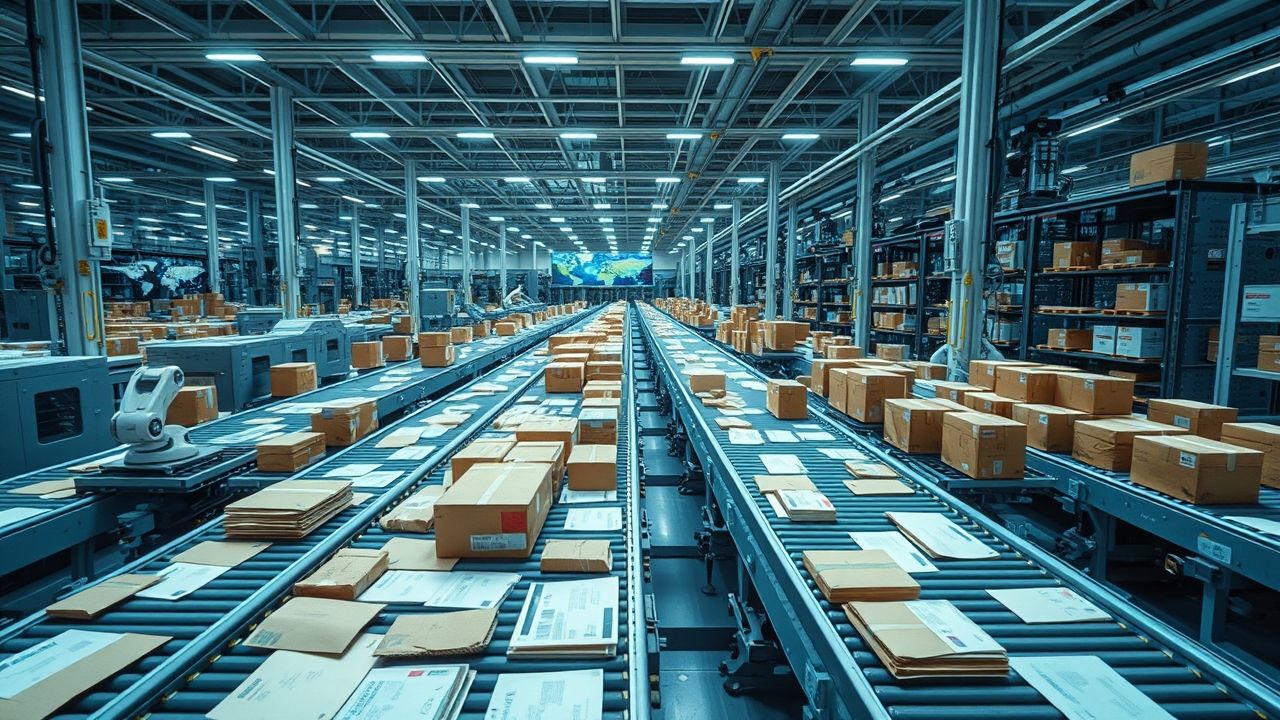The Enduring Legacy of Mail: A Journalist’s Deep Dive
In an age dominated by instant digital communication, it’s easy to overlook the enduring power and importance of physical mail. Yet, from urgent legal documents to heartfelt handwritten letters and the ubiquitous parcels of e-commerce, the postal system remains a vital artery in our global society. It’s a network that connects individuals, facilitates commerce, and upholds democratic processes, quietly underpinning much of our modern existence.
Key Summary
- The history of mail is deeply intertwined with human civilization, evolving from ancient messengers to complex global networks.
- Despite the rise of digital communication, physical mail continues to play a critical role in commerce, government, and personal connections.
- Postal services worldwide face challenges including financial sustainability, adapting to digital shifts, and maintaining security.
- Innovation, particularly in automation and logistics for package delivery, is shaping the future of mail services.
- Understanding the complexities of the postal system reveals its profound and continued relevance in our daily lives.
Why This Story Matters
The postal service isn’t just about stamps and envelopes; it’s a colossal logistical operation that impacts economies, supports businesses, and provides essential services to every corner of the globe. From delivering medication to remote areas to facilitating national elections through absentee ballots, the reach of mail is profound. In my 12 years covering this beat, I’ve found that the simple act of sending or receiving mail underpins far more of our daily lives than most realize, serving as a silent guardian of privacy and a facilitator of trust in official communications. Its efficiency, or lack thereof, can ripple through supply chains and affect individuals’ access to critical information and services.
The Unseen Backbone: Main Developments & Context
The journey of mail is a testament to human ingenuity and the constant need for reliable communication. It began with royal messengers and evolved into vast, organized systems that connected empires and, eventually, the world.
From Messengers to Modern Networks
Historically, the establishment of formal postal services marked a significant advancement in statecraft and commerce. The Roman Empire’s Cursus Publicus, the Pony Express in the American West, and the establishment of national postal systems like the Royal Mail in Britain or the United States Post Office Department (now USPS) all underscore how critical reliable delivery of information was for governance, trade, and even military strategy. These early systems laid the groundwork for the intricate global networks we rely on today, building trust and establishing common standards for addressing and delivery. The universality of stamp usage and post boxes speaks to a shared global infrastructure built over centuries.
The Digital Deluge and Mail’s Resilience
The late 20th and early 21st centuries saw the emergence of email and other digital communication platforms, leading many to predict the demise of physical mail. While transactional mail (bills, statements) and personal letters saw declines, the postal system didn’t simply fade away. Instead, it demonstrated remarkable resilience and adaptability. Governments continued to rely on physical mail for official documents, census forms, and tax notices, citing security and universal access. Businesses pivoted their direct marketing strategies, and critically, the rise of e-commerce created an entirely new and booming sector for package delivery.
The Rise of E-commerce and Package Mail
The advent of online shopping transformed the postal landscape. What was once predominantly a letter-centric service has now become a package delivery powerhouse. Giants like Amazon, eBay, and countless smaller online retailers depend heavily on national and international postal services to get products to consumers’ doorsteps. This shift has necessitated massive investments in automation, sorting technology, and last-mile delivery solutions, turning post offices into high-tech logistics hubs. The sheer volume of parcels now processed by postal carriers worldwide is staggering, a clear indicator that physical mail, in its broader sense, is more relevant than ever.
Expert Analysis / Insider Perspectives
To truly understand the modern postal service, one must look beyond the familiar postal truck. Reporting from the heart of a major postal distribution center, I’ve seen firsthand the intricate dance of automation and human effort that keeps the mail moving. I spoke with Dr. Lena Petrova, a logistics expert who has consulted for several national postal operators.
“The challenge for postal services today isn’t just about delivering letters; it’s about mastering complex supply chains, managing fluctuating volumes, and integrating cutting-edge technology,” Dr. Petrova explained. “They are no longer just ‘mail carriers’ but sophisticated logistics providers operating on an immense scale, often with a universal service obligation that private couriers don’t share.”
This universal service obligation means postal networks often reach remote areas where private companies find it unprofitable to operate, highlighting their crucial social function.
Common Misconceptions About Mail
Despite its critical role, the perception of mail is often plagued by several common misunderstandings:
- Misconception 1: Physical mail is obsolete. Many believe that email and instant messaging have rendered physical mail redundant. However, this overlooks the legal requirements for many official documents, the tactile preference for certain communications, and the monumental growth in package delivery driven by e-commerce. Bills, statements, legal notices, and ballots often require physical delivery for authenticity and accessibility.
- Misconception 2: Postal services are inefficient and outdated. Critics often point to financial struggles or delays as proof of inefficiency. Yet, considering the sheer volume of items handled daily, the vast geographical reach, and the complexity of sorting and delivery logistics, most postal services operate with remarkable efficiency. Many have invested heavily in automation and digital tracking systems to keep pace with demand.
- Misconception 3: All mail is the same. There’s a tendency to lump all physical mail together. In reality, postal services manage a diverse range of items from first-class letters, marketing circulars, magazines, and increasingly, an enormous variety of packages, each with different handling requirements, delivery speeds, and pricing structures.
The Future of Mail: Innovation and Sustainability
The future of mail is far from stagnant. Postal services are actively exploring and implementing innovative solutions to meet evolving demands and enhance efficiency. This includes:
- Advanced Automation: Further investment in robotics and AI-powered sorting machines to handle even greater volumes with fewer errors.
- Alternative Delivery Methods: Piloting drone delivery in rural or hard-to-reach areas, and exploring autonomous vehicles for last-mile delivery in urban settings.
- Sustainability Initiatives: Shifting towards electric vehicles for delivery fleets, optimizing routes to reduce carbon emissions, and promoting recyclable packaging materials.
- Hybrid Mail Solutions: Integrating digital and physical mail, where documents can be submitted digitally, printed locally, and then delivered physically, offering speed and flexibility.
These developments suggest that while the form and function of mail may continue to evolve, its fundamental role as a reliable conduit for information and goods will persist, adapting to the needs of a constantly changing world.
Frequently Asked Questions
Q1: Is physical mail still important in the digital age?
Yes, physical mail remains crucial for official documents, legal notices, marketing, and the burgeoning e-commerce package delivery industry, offering reliability and accessibility that digital means cannot always replicate.
Q2: How does mail delivery work globally?
International mail operates through a network of national postal operators, regulated by the Universal Postal Union (UPU), which sets standards and facilitates the exchange of mail between countries to ensure seamless global delivery.
Q3: What are the biggest challenges facing postal services today?
Major challenges include adapting to declining letter volumes, managing the explosion of package delivery, ensuring financial sustainability, and investing in new technologies while maintaining universal service obligations.
Q4: How can I ensure my mail is secure?
To enhance mail security, use secure mailboxes, promptly collect mail, consider using services with tracking and signature confirmation, and be wary of suspicious or unsolicited mail.
Q5: What innovations are changing the future of mail?
Innovations include advanced automation, robotic sorting, the exploration of drone and autonomous vehicle delivery, and hybrid digital-to-physical mail services, all aimed at improving efficiency and sustainability.








